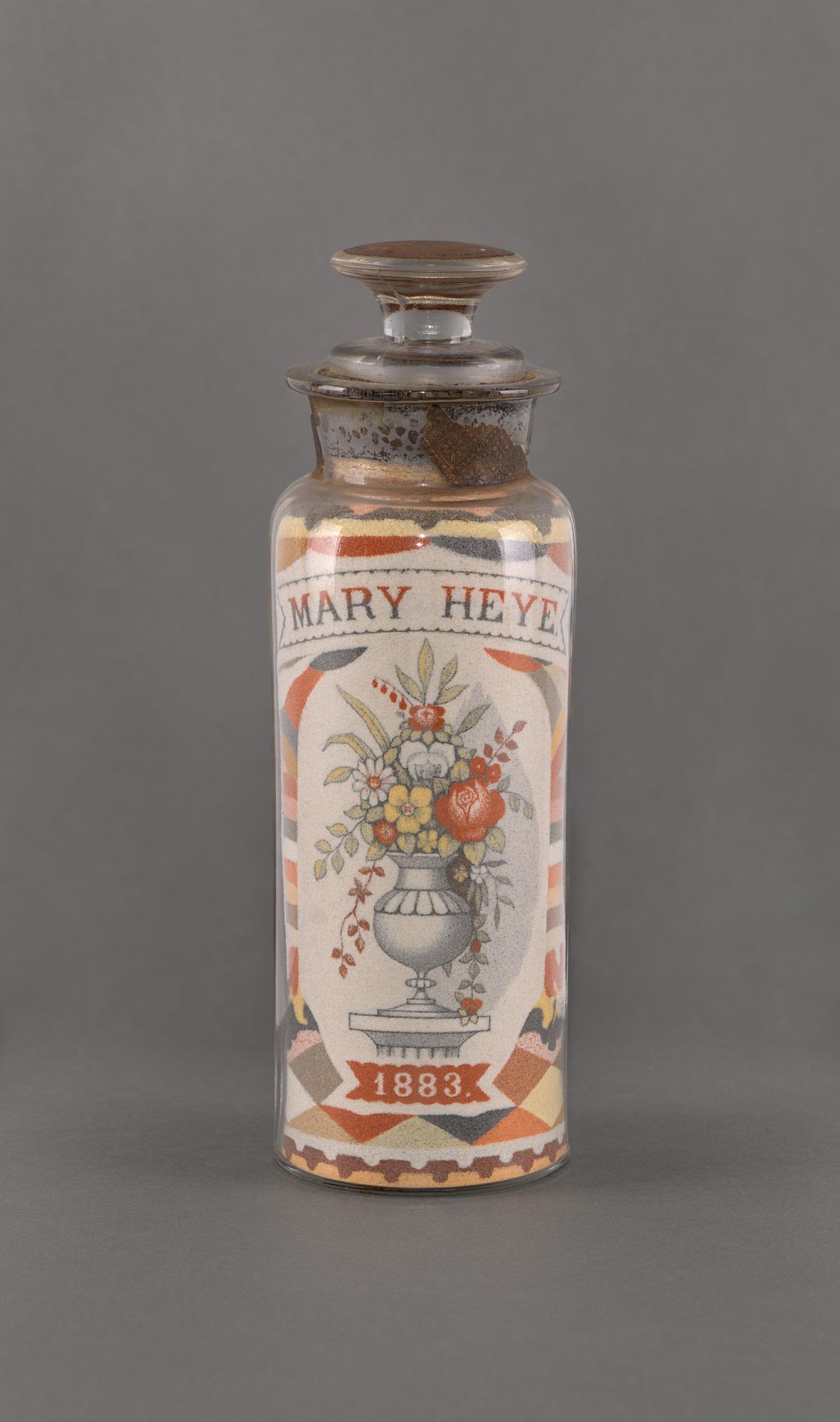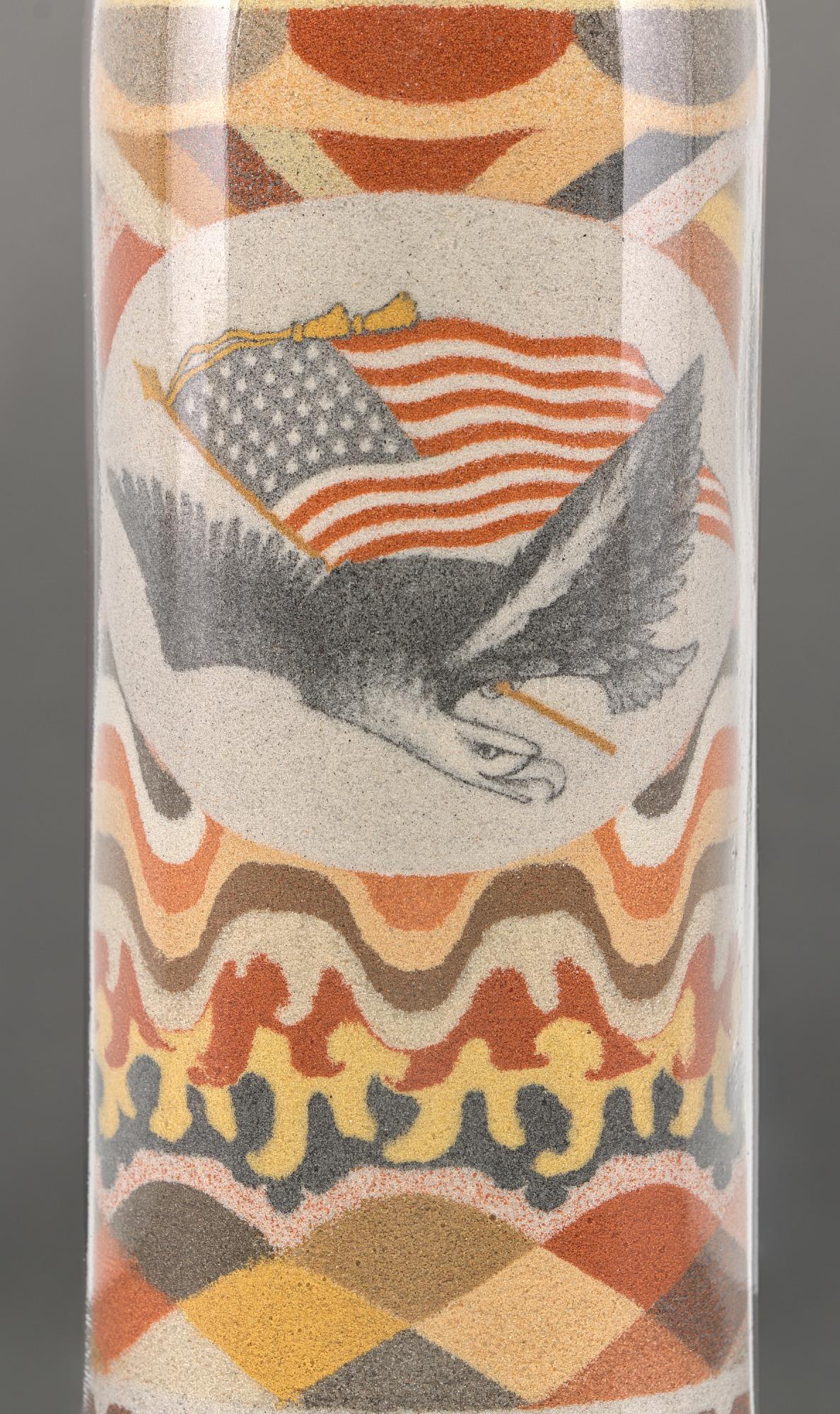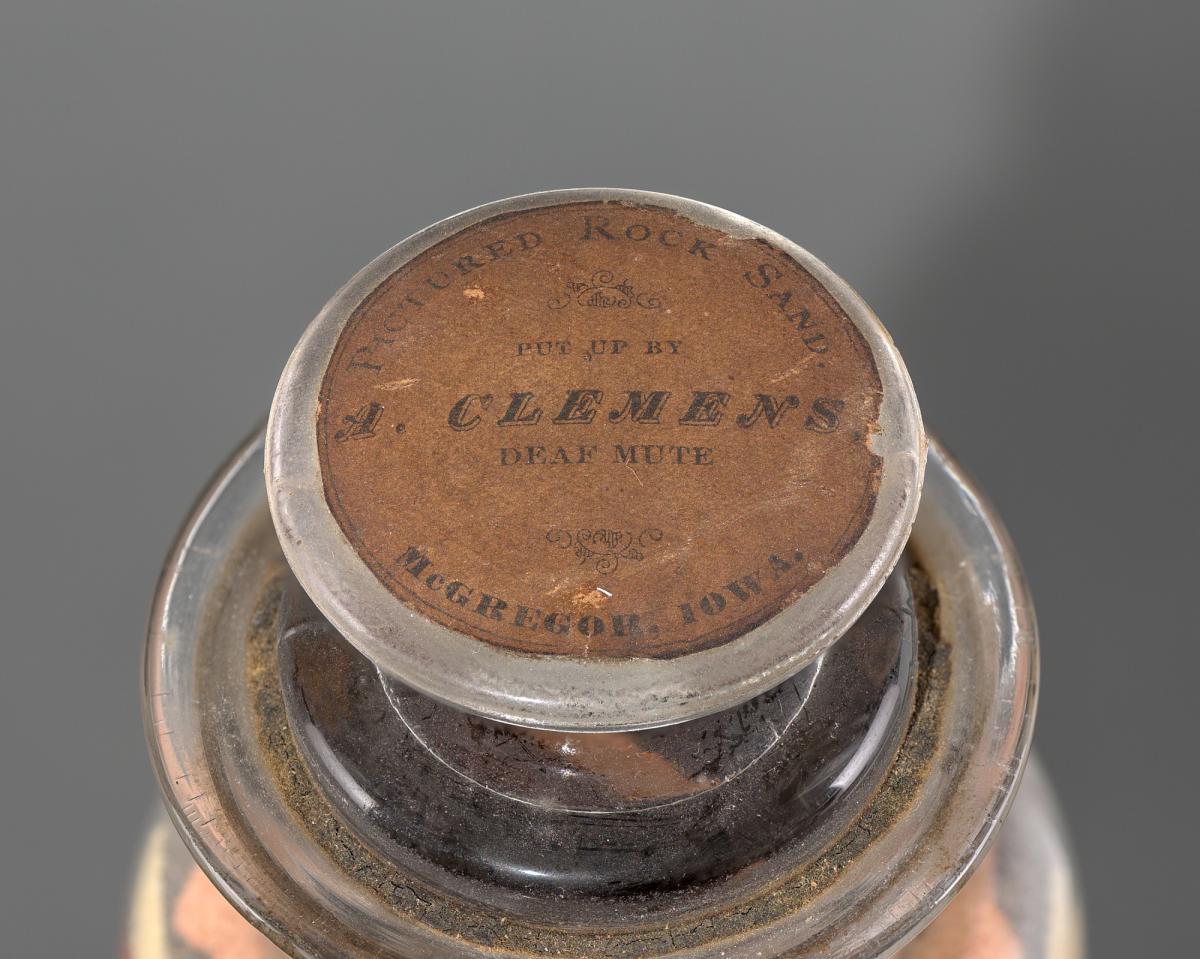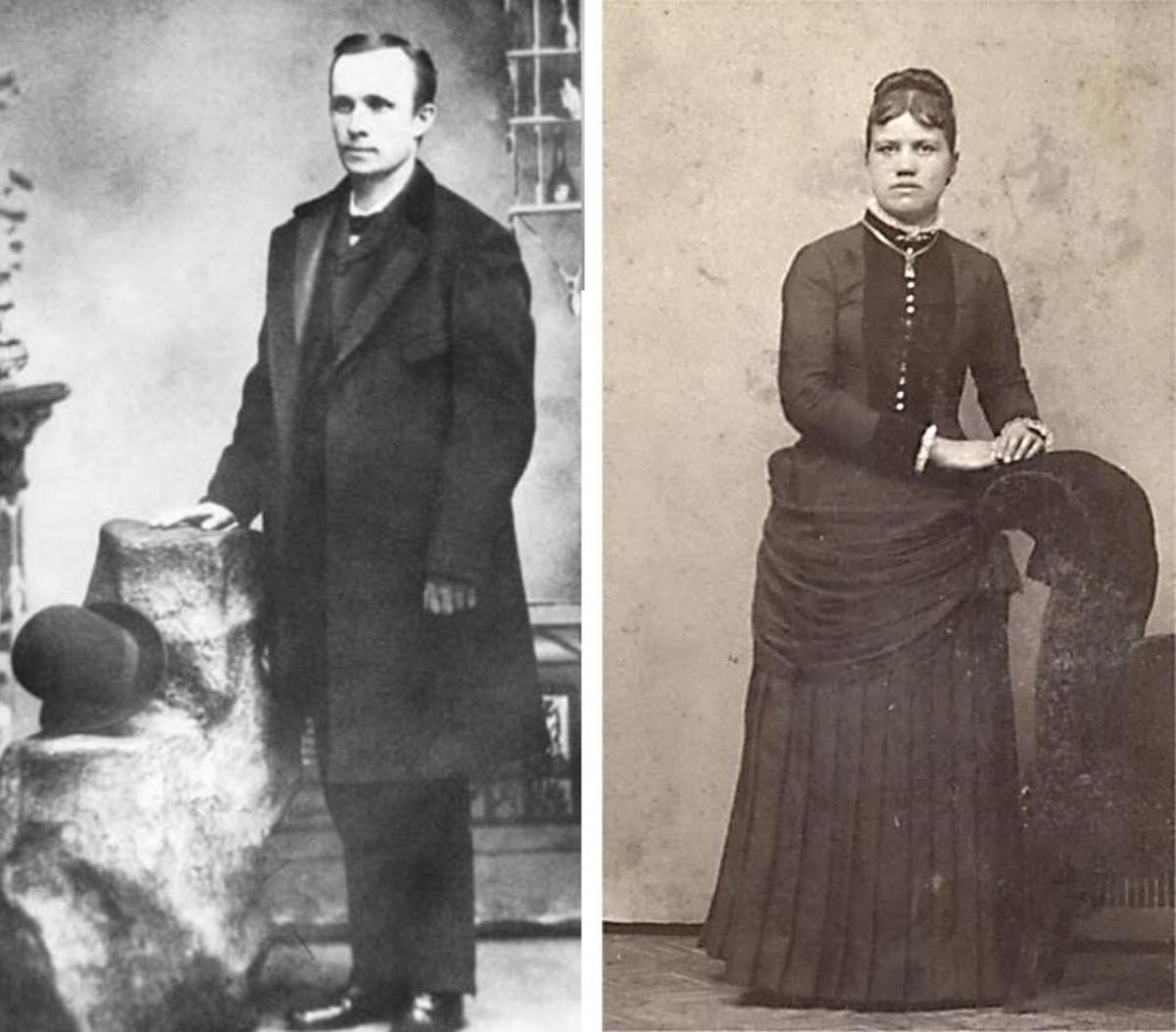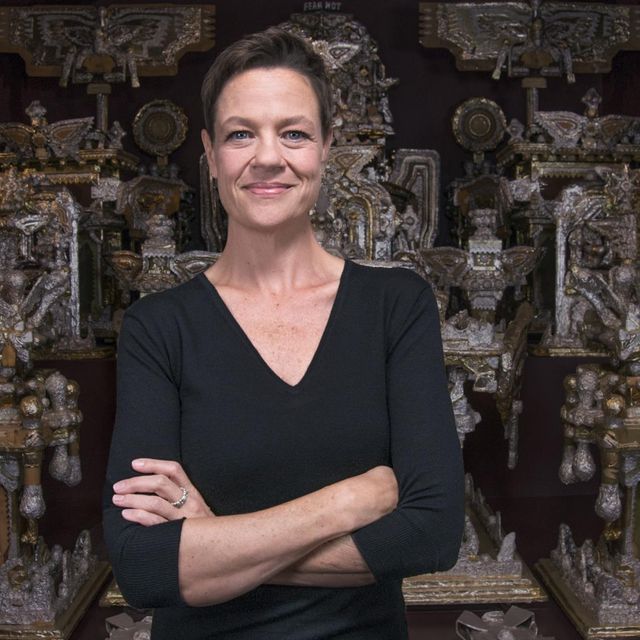

Brothers Ken Brashier and Mike Brashier inherited an enigmatic object from their mother, Mary Rohse Brashier, following her death in 2020. Mrs. Brashier first learned that their family heirloom, a bottle filled with colored sand, was more than a mere curiosity when she saw a segment on artist Andrew Clemens and his sand bottles on Antiques Roadshow. She told her sons she hoped the piece made in tribute to her maternal ancestor, Mary Heye, might someday be shared with national audiences at a major museum. Her wish came true when Ken and Mike donated the bottle to the Smithsonian American Art Museum.
Sand bottles are made, quite literally, a grain of sand at a time—each grain stacked and pushed around inside a clear container until the layers and colors form a desired design. There is no adhesive holding the grains of sand in place, only pressure and a sealed wax stopper. Part painting, part sculpture, the resulting art form is astonishing and uncommon.
Andrew Clemens is credited with “inventing” this rare art form. He became renowned for making customized bottles on commission, most often commemorating or honoring a specific person or event. Clemens may have inspired a fad of amateur sand-bottle making, but researchers into this practice believe that no other artist achieved his level of skill. Clemens produced hundreds of sand bottles but only a small number of these fragile artworks survive.
Clemens’s earliest works feature simple geometric patterns, often a diamond against an ivory background. The later bottles featured increasingly complex images and patterns, including landscape imagery, steamboats, trains, flowers, eagles, and flags. His peak period of production was between 1880–1886; each bottle could take up to a year to complete.
Andrew Clemens was born in 1857 and lived his entire life in Iowa—most of it in an area of the Mississippi River Valley near Pikes Peak State Park. He and his brothers frequented an area of the park called Pictured Rocks, which was famous for its variegated sandstone bluffs, veined with iron and mineral deposits that result in over forty different shades of stone.
Clemens lost his hearing during a childhood illness and after that was educated at the Iowa State School for the Deaf, in Council Bluffs. He was artistically inclined and liked making things in the school woodshop. One summer vacation in the early 1870s, he began making sand bottles.
The brothers would gather dislodged pieces of sandstone from the bluffs, take them home and sort it, dry, and grind each sample into fine powder—which gave Andrew a rich palette for his designs. The early pieces were simple in design, but painstakingly executed. Clemens crafted his own set of hickory and bent fish-hook tools to deposit and push the sand around, and he became increasingly adept at making intricate designs to be seen in the round.
When a piece was complete, Clemens secured the sand with a scrap of velvet near the stopper, then sealed the lid in place with wax and a custom-printed label identifying Clemens as the artist.
After graduating, Clemens declined a teaching position to pursue his art. In the 1870s he worked in front of live audiences in venues like dime museums and the circus. Few of the early phase bottles survive, in part because the old glass is very fragile—but also because in the days he worked for live audiences, the bottles would be broken on completion to show skeptics that the pieces really were made from individual grains of sand. By 1880 he had become accomplished enough to work only on commissioned projects, and eventually his commissions came from as far as Europe.
Clemens became a figure of historical importance, not only as a highly accomplished artist, but also as a nineteenth-century American with physical challenges, who became respected and independent via creativity and determination.
Clemens offered a menu of patterns for his commissions, including those seen here: floral or geometric patterns, patriotic symbols, names, and dates. On the Heye bottle, one side bears the honoree’s name, the year the bottle was made, and a detailed floral arrangement. The other side has a flying eagle carrying the United States flag, and an array of precise geometric ornamentation.
Given the fragility of the nineteenth-century glass bottles, the minimal value bestowed on such objects until recently, and a tendency for the stoppers to come unsealed and the sand patterns to dislodge or spill, pristine Clemens bottles have become exceedingly rare and highly collectible.
Doing a little digging on the “Mary Heye” that the bottle celebrates, Ken Brashier discovered that four women in his family history shared the name Mary Heye. The Heye family had immigrated from the German “Kingdom of Hanover” to Clayton County, Iowa, in 1847. The bottle was a commissioned work by Clemens, who also lived in Clayton County, Iowa, in the town of McGregor.
Ken determined that two of the four Mary Heyes were alive when Clemens executed the “Mary Heye” sand bottle, in 1883. Although he concedes that it may be impossible to ever know for sure, he concluded that the bottle was most likely made for the youngest of the four Marys: Mary Bertha Heye, their mother’s grandmother.
Mary Bertha Heye (1861-1934) became Mary Heye Rohse in 1890, but had not yet married in 1883, when the bottle was made, perhaps as a birthday or special occasion gift, when she was around twenty-two. Although some details about the history of the Mary Heye bottle have become obscured over time, it is exceptionally rare for an artwork such as this to have retained ties to both the maker and the honoree.














